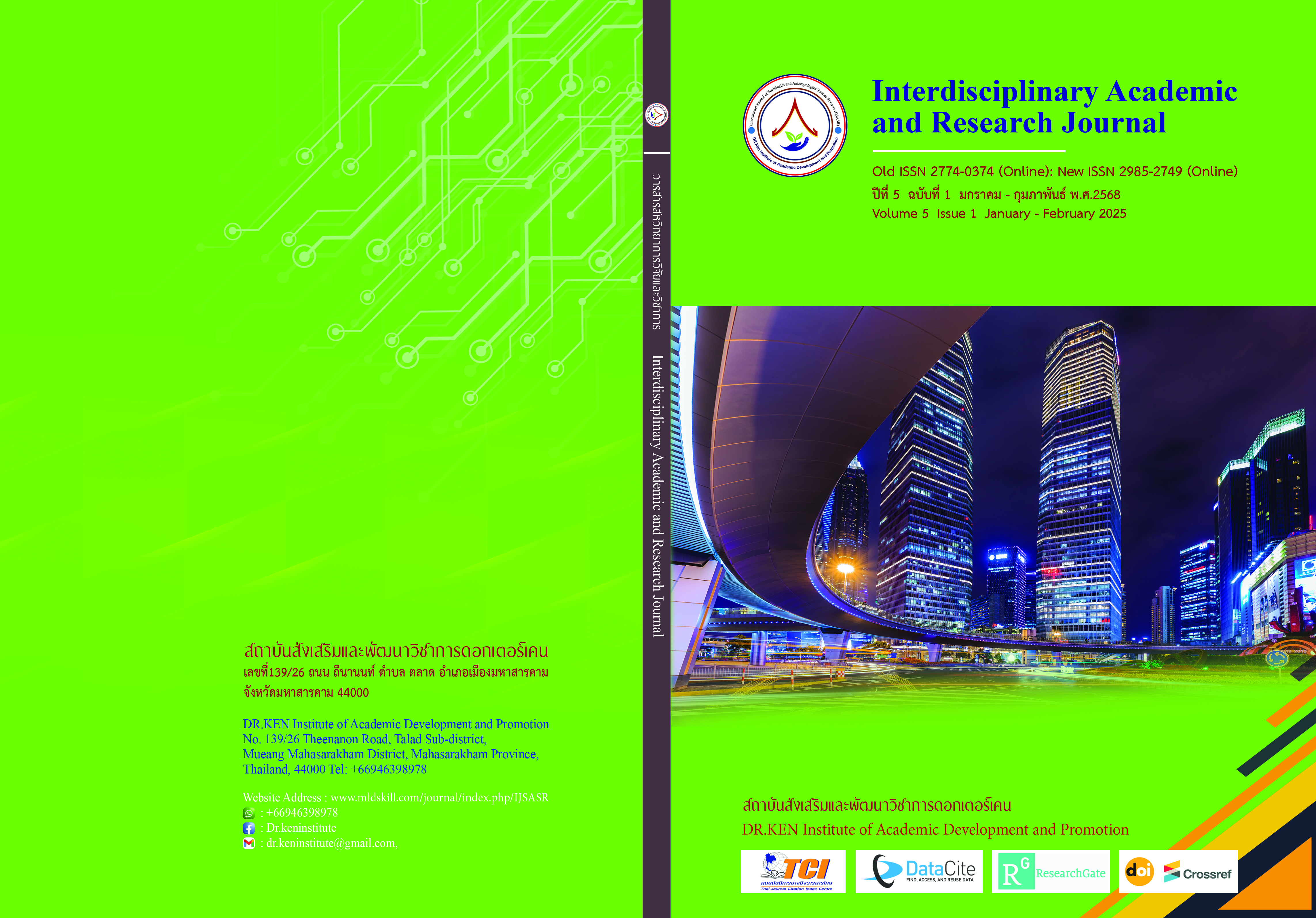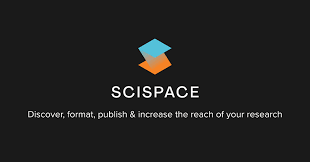Factor Analysis Active Learning Competencies of Teachers at the Roi-Et Primary Educational Service Area Office
DOI:
https://doi.org/10.60027/iarj.2025.279412Keywords:
Factor analysis, Active learning management, Learning competenciesAbstract
Background and Aims: Active learning increases student engagement and makes learning more dynamic and interactive, so teachers' ability to plan and facilitate it is essential. Along with fostering critical thinking and problem-solving abilities, this competency equips students for challenges they may face in the real world. Thus, the objectives of this research are: (1) To study the components of active learning competencies of teachers under the jurisdiction of Roi Et Primary Educational Service Area Office and 2) To study the active learning competencies of teachers under the Roi Et Primary Educational Service Area Office.
Methodology: The sample group used in this study consists of teachers hired by the Office of the Primary Education Service Area, Roi Et, for the 2023–2024 school year, which came from the Office of the Primary Education Service Area, Roi Et, determining the sample size of 380 individuals through stratified random sampling from teachers in each school area. A 5-level rating scale questionnaire with a reliability value of.96 serves as the data collection tool. The statistics used in data analysis include mean, standard deviation, principal component extraction using the Principal Component Method, exploratory factor analysis (EFA) by rotating the axis (Rotation Method: Varimax with Kaiser Normalization) and rotating the axis with varimax to collect or reduce the observed variables.
Result: Exploratory Factor Analysis (EFA) has a cumulative variance component weight of 80.951 at the 0.05 level of statistical significance. The variables that were noted are as follows: (1) In terms of learning design, it was found that teachers have a high level of proactive learning management competency. When considering each item, the top 3 items with the highest mean values are: teachers set learning objectives, followed by teachers set appropriate teaching time, and teachers improve teaching and learning. (2) In terms of learner-centered learning management, it was found that teachers have a high level of proactive learning management competency. When considering each item, the top 3 items with the highest mean values are: teachers study learners’ needs or interests by allowing learners to participate in learning, followed by teachers using teaching media to practice thinking, problem-solving, and knowledge discovery, and teachers using teaching media to practice thinking, problem-solving, and knowledge discovery. (3) In terms of using and developing learning media, it was found that teachers have a high level of proactive learning management competency. When considering each item The top 3 items with the highest mean values are: Teachers select teaching media that match the characteristics of the lesson content, followed by: Teachers analyze the characteristics and nature of the learners, and Teachers select teaching interesting media and attract attention. (4) In terms of learning assessment, it was found that teachers have a high level of proactive learning management competency. When considering each item, the top 3 items with the highest mean values are: Teachers determine the characteristics they want to measure according to the learning objectives, followed by: Teachers determine assessment objectives that are consistent with the learning objectives, and Teachers compile and integrate various data from all items measured.
Conclusion: The analysis of the components of the survey of the competence of active learning management of teachers under the Office of the Primary Education Area, Roi Et, found that it consists of 4 components, 44 variables, with weights, components between 0.528 and 0.864, consisting of learning design, learning management that focuses on learners, use and development of learning media, measurement, and evaluation of learning outcomes.
References
คณะกรรมการอิสระเพื่อการปฏิรูปการศึกษา. (2562). รายงานเฉพาะเรื่องที่ 12 หลักสูตรและการเรียนการสอนฐานสมรรถนะ. กรุงเทพมหานคร: สำนักงานเลขาธิการ
ทิศนา แขมมณี. (2553). ศาสตร์การสอน องค์ความรู้เพื่อการจัดกระบวนการเรียนรู้ที่มีประสิทธิภาพ. พิมพ์ครั้งที่ 12. กรุงเทพฯ: ด่านสุทธาการพิมพ์.
บุญชม ศรีสะอาด. (2545). การวิจัยเบื้องต้น. พิมพ์ครั้งที่ 7. กรุงเทพฯ: สุวีริยาสาส์น.
เพชรน้อย สิงห์ช่างชัย. (2549). หลักการและการใช้สถิติการวิเคราะห์ตัวแปรหลายตัว สำหรับการวิจัยทางการพยาบาล. (พิมพ์ครั้งที่ 3). สงขลา: ชานเมืองการพิมพ์.
สถาบันส่งเสริมการสอนวิทยาศาสตร์และเทคโนโลยี (สสวท.). (2564). โครงการเพิ่มศักยภาพครูให้มีสมรรถนะของครูยุคใหม่สำหรับการเรียนรู้ศตวรรษที่ 21. Retrieved from: https://www.ipst.ac.th/about-us/mission2
สถาพร พฤฑฒิกุล. (2558). เอกสารประกอบการฝึกอบรม “คุณภาพผู้เรียนเกิดจากกระบวนการเรียนรู้”. สระแก้ว: คณะเทคโนโลยีการเกษตร มหาวิทยาลัยบูรพา วิทยาเขตสระแก้ว.
สำนักงานเขตพื้นที่การศึกษาประถมศึกษาร้อยเอ็ด. (2564). การอบรมพัฒนากิจกรรมการจัดการเรียนรู้ Active learning ในสถานศึกษา. ร้อยเอ็ด: สำนักงานเขตพื้นที่การศึกษาประถมศึกษาร้อยเอ็ด.
สำนักงานคณะกรรมการการศึกษาขั้นพื้นฐาน. (2553). คู่มือประเมินสมรรถนะครู (ฉบับปรับปรุง). กรุงเทพฯ: สำนักพัฒนาครูและบุคลากรทางการศึกษาขั้นพื้นฐาน.
สำนักงานเลขาธิการสภาการศึกษา กระทรวงศึกษาธิการ. (2563). การจัดการเรียนรู้ฐานสมรรถนะเชิงรุก. กรุงเทพมหานคร: สำนักงานเลขาธิการสภาการศึกษา.
สำนักงานวิชาการและมาตรฐานการศึกษา กระทรวงศึกษาธิการ (2553). แนวการจัดการเรียนรู้ ตามหลักสูตรแกนกลางศึกษาขั้นพื้นฐาน พุทธศักราช 2551. กรุงเทพฯ : โรงพิมพ์ชุมนุมสหกรณ์การเกษตรแห่งประเทศไทย.
สินีนาฏ จันทะภา. (2564). “ครูยุคใหม่สู่การจัดการเรียนรู้ฐานสมรรถนะ” สิ่งจำเป็นที่ต้องมี. Retrieved from: https://www.ipst.ac.th/news/12598/teacher_ipst.html.
สุชาติ ประสิทธิ์รัฐสินธุ์. (2537). การสร้างมาตรวัดในการวิจัยทางสังคมศาสตร์และพฤติกรรมศาสตร์. พิมพ์ครั้งที่ 2. กรุงเทพฯ: สถาบันบัณฑิตพัฒนบริหารศาสตร์
อัมมาร สยามวาลา (2554). การปฏิรูปการศึกษารอบใหม่: สู่การศึกษาที่มีคุณภาพอย่างทั่วถึง. เอกสารวิชาการนำเสนอในงานสัมมนาวิชาการสถาบันวิจัยเพื่อการพัฒนาประเทศไทยประจำปี 2556.
Yamane, T. (1973). Statistics an introductory analysis. New York Harper & Row.
Zeiger, S. (2015). English Education. Miami State: Miami University.
Downloads
Published
How to Cite
Issue
Section
License
Copyright (c) 2025 Interdisciplinary Academic and Research Journal

This work is licensed under a Creative Commons Attribution-NonCommercial-NoDerivatives 4.0 International License.
Copyright on any article in the Interdisciplinary Academic and Research Journal is retained by the author(s) under the under the Creative Commons Attribution-NonCommercial-NoDerivatives 4.0 International License. Permission to use text, content, images, etc. of publication. Any user to read, download, copy, distribute, print, search, or link to the full texts of articles, crawl them for indexing, pass them as data to software, or use them for any other lawful purpose. But do not use it for commercial use or with the intent to benefit any business.
















.png)


